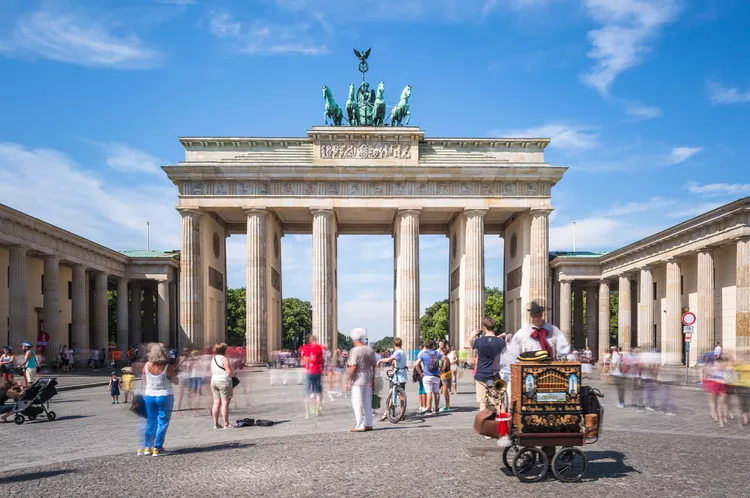Summary
Major Cities of East Germany
- Berlin:
Berlin is both the German capital and the largest city in Germany. After being divided into East and West during the Cold War, Berlin was reunited following the fall of the Wall in 1989. Consequently, the city quickly emerged as the third most visited destination in Europe, and it stands out as the most cosmopolitan and vibrant hub in Germany, celebrated for its art, architecture, and nightlife. - Dresden:
Dresden, located 120 miles south of Berlin, is affectionately nicknamed “Florence at the Elbe” due to its picturesque setting on the banks of the Elbe River and its remarkable Baroque architecture along with world-class museums. Although 80% of Dresden’s historic center was devastated in World War II, all significant landmarks have been painstakingly restored to their former glory. Notable attractions include the Church of Our Lady, the Green Vault, and the Semper Opera. - Leipzig:
Leipzig, situated 118 miles southwest of Berlin, has been home to many renowned German artists. Goethe was a student here, and Bach served as a cantor. Today, the New Leipzig school revitalizes the art scene with talented artists like Neo Rauch. Alongside being a cultural hub, Leipzig played a crucial role in recent German history, as demonstrators here initiated the peaceful revolution that ultimately led to the fall of the Berlin Wall. Essential attractions include the Bach Museum, St. Thomas Church, and Auerbachs Keller, one of the oldest pubs in Germany.
Minor Cities of East Germany
- Erfurt:
Erfurt, the capital of Thuringia, was established as a Catholic diocese in 742 and became a vital trading hub during the Middle Ages. The city boasts historic townhouses, cathedrals, monasteries, and the oldest inhabited bridge in Europe. Its “Altstadt” (Old Town) should be explored on foot, offering a charming glimpse into medieval university life. Located just an hour away from both Leipzig and Weimar, Erfurt remains a hidden gem for many travelers to Germany. - Weimar:
Weimar is the epicenter of German culture, where renowned artists and thinkers such as Goethe, Bach, and Nietzsche influenced the artistic narrative. Additionally, it is the birthplace of the Bauhaus movement, which revolutionized 20th-century aesthetics. - Potsdam:
Potsdam, just a short train journey from Berlin, is home to many parks and palaces, several of which are designated as UNESCO World Heritage sites. Noteworthy locations include the rococo palace Sanssouci and its intricate royal park, which features cascading terraces, fountains, and statues. History enthusiasts will appreciate Cecilienhof, the venue for the Potsdam Conference in 1945, where key figures made significant decisions regarding post-war Germany. - Wartburg Castle and Eisenach:
The Wartburg Castle is perched on a steep hill overlooking the city of Eisenach and the scenic forests of Thuringia. This historical marvel, constructed in 1067, exemplifies over 900 years of German history. It served as a refuge for Martin Luther, the German church reformer, during which he translated the Bible into German in just eleven weeks. Since 1999, Wartburg Castle has been a UNESCO World Heritage Site.
Quintessential Meals in East Germany
To fully experience East German life, sampling these seven traditional meals is essential. The cuisine emphasizes meat, offals, and an array of sausages, making it a delightful dive into Ostalgie, or nostalgia for East Germany.
Must-haves include:
- Spreewald Pickle
- Königsberger Klopse
- A selection of sausages from Ketwurst to Grützwurst
- Sülze
Products that Survived Reunification
While exploring modern Germany, one might overlook the presence of Ostprodukte (products from East Germany). Reunification brought challenges, as many West German companies replaced their Eastern counterparts. However, a select few products have withstood the test of time and enjoy nationwide popularity in the 21st century. Look for Trabants on the streets, the cheerful Ampelmännchen signaling safe crossing, and Rotkäppchen (Sekt – sparkling wine) to celebrate the rich heritage of both sides of Germany.





